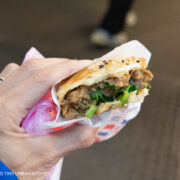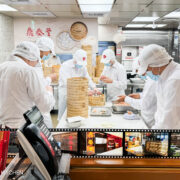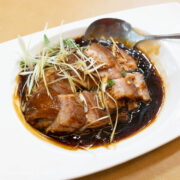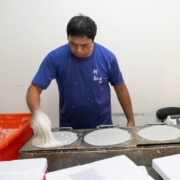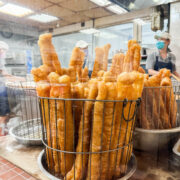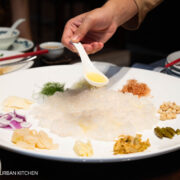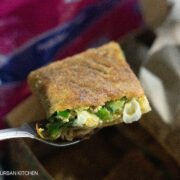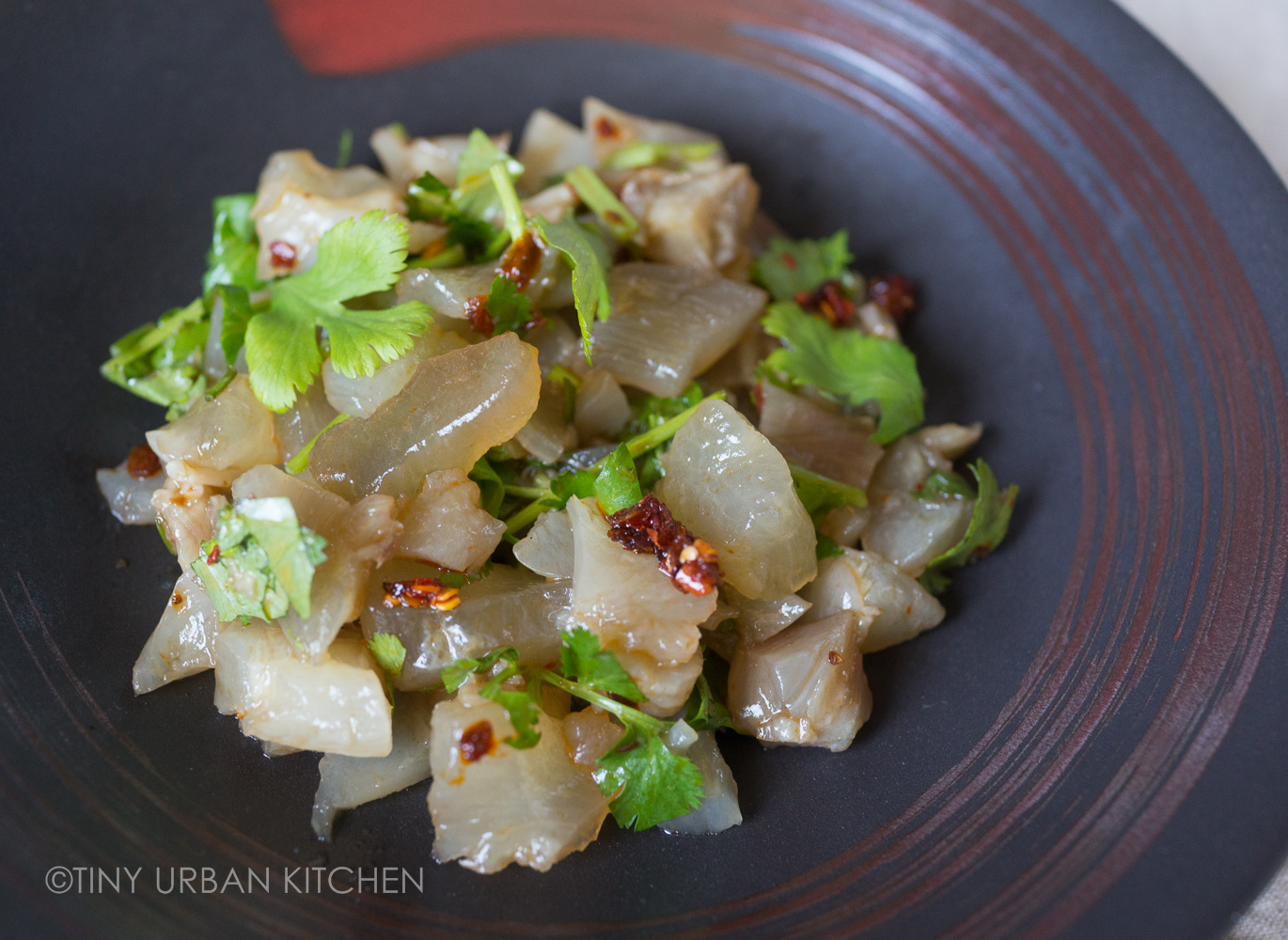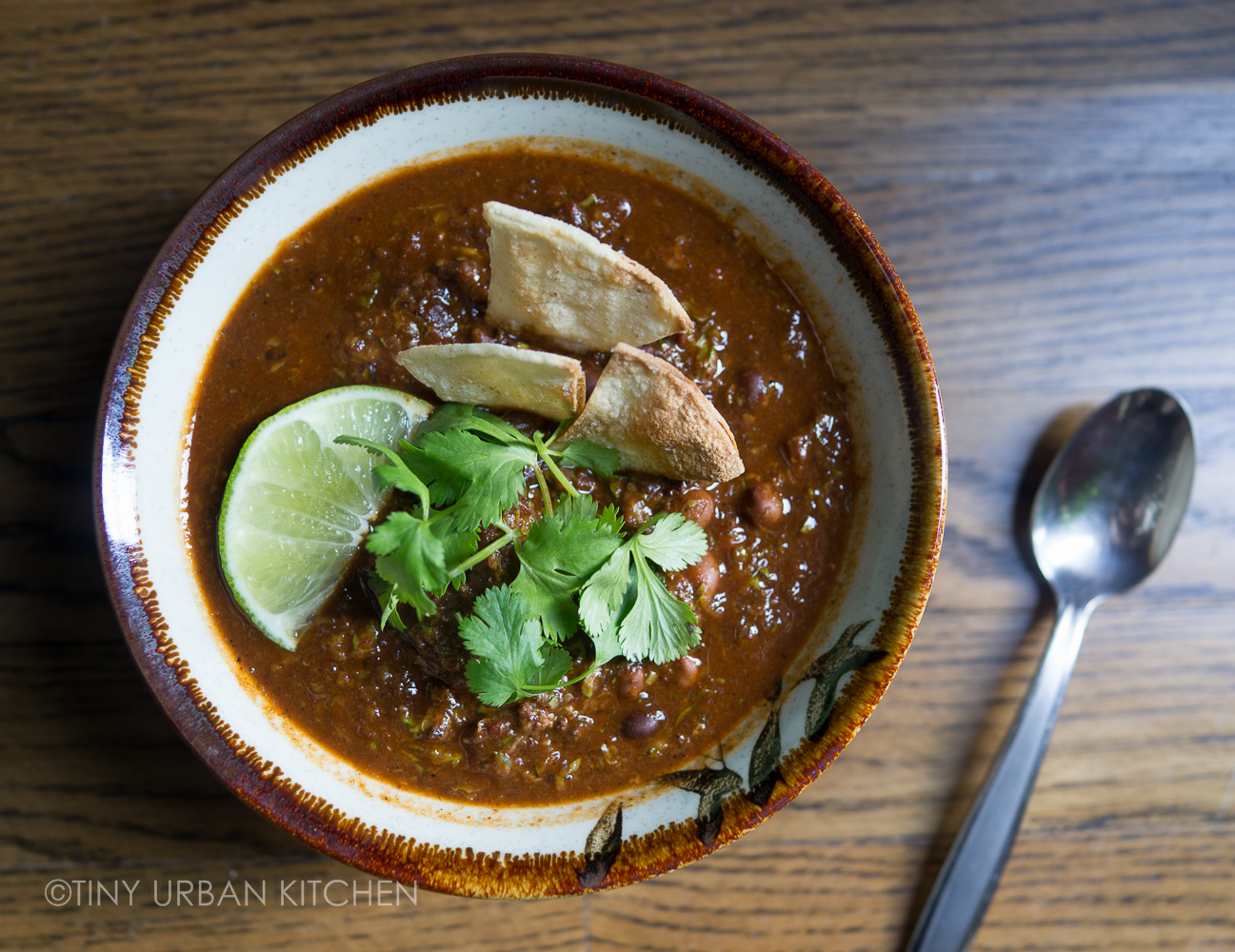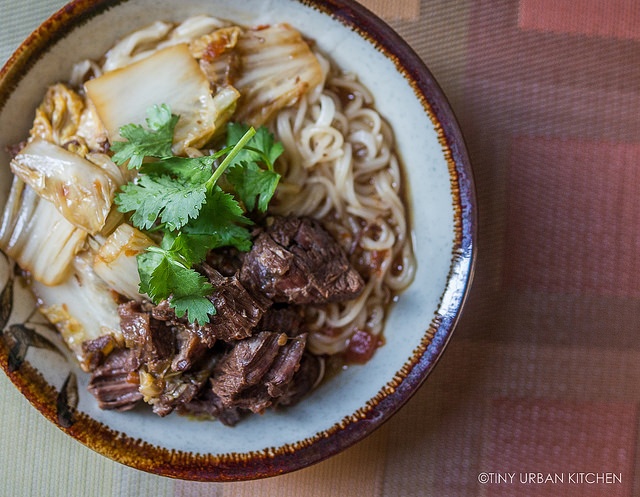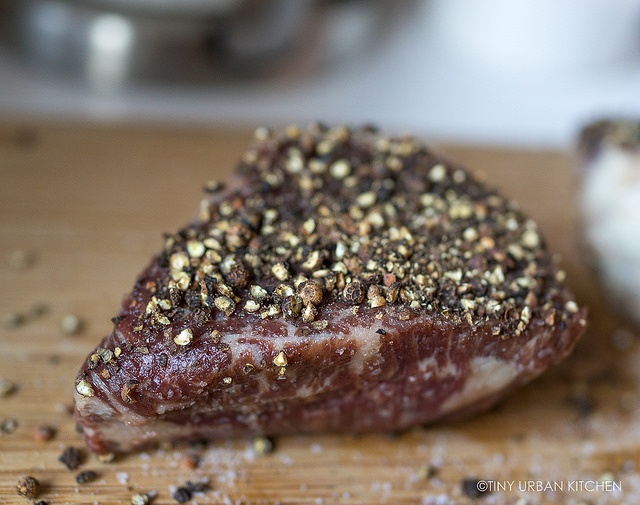
Beef cheeks are so underappreciated. I first tried beef cheeks in Napa Valley at a lovely dinner at Nickel & Nickel Winery during the S. Pellegrino 9th Annual Almost Famous Chef Competition. I fell in love with the ultra soft texture, collagen-rich texture of the meat. It was much less dry, much less stringy than any meat I'd ever enjoyed. Later, I found out that beef cheeks are really really cheap, because no one wants them! Our local upscale market (Savenor's) sells them for $2/lb (unprocessed), or $6/lb processed.
Around the same time, a Spanish wine company called Tapeña (derived from the words Tapas (small plates) and Peña (close group of friends)) contacted me asking whether I would be interested in trying some wines that were designed to go with Spanish tapas.
Well, we ended up making a French dish to pair with the Spanish wine, so maybe you can call this a European fusion meal? 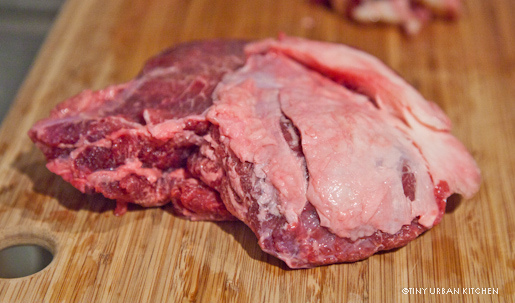
I mentioned earlier that beef cheeks are a lot cheaper if you buy them unprocessed. Please note that it takes A LOT of work to process the cheeks. You literally get this "flap" that's the entire cheek. You have to do a lot of work to cut away all the fat and connective tissue surrounding the cheek meat. I personally think it's not worth the effort and I'm happy to pay $6/lb for the cleaned version (pictured above). 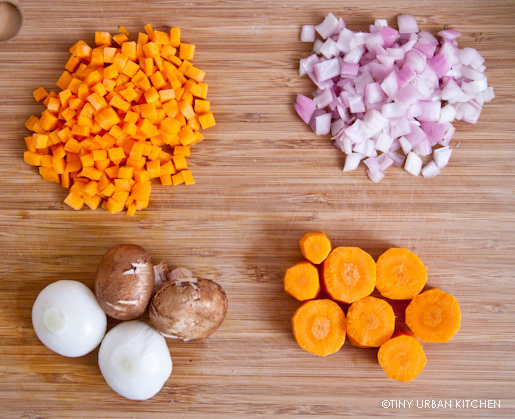
Since we were having wine, I invited my wino friend Peter (he's written a few guest posts on this blog) to come over. I figured I could finagle a blog post out of him. I always love cooking with Peter and his wife Chia Chi because they really enjoy good food and do not mind cooking time-consuming meals with me in my tiny kitchen. 
We decided to make Boeuf Bourguinion straight from Julia Child's book (a la Simply Recipes). By now, this is probably one of the most popular food blogger recipes because it's the first dish that Julie tried to make in the movie Julie and Julia. 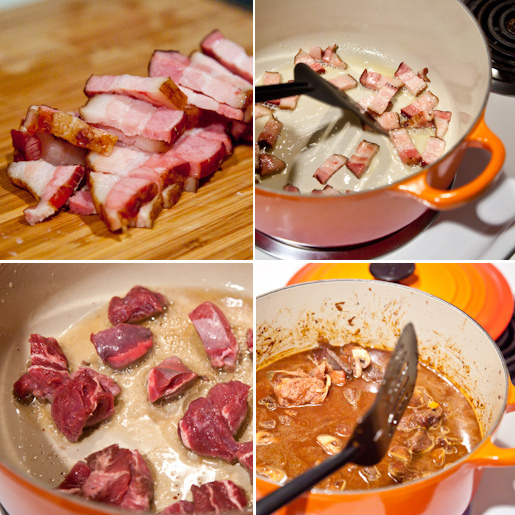
Of course, we put a slight twist on the Julia Child recipe since we were using beef cheeks instead of normal beef chuck (thanks to this blog's inspiration). 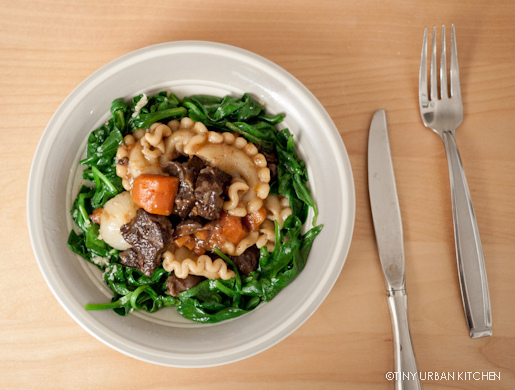
The final dish turned out great! Yes, you have to cook beef cheeks for a long time before you break down the connective tissue. However, because of its slightly higher fat content, the texture of the final product is deliciously soft.
Since I basically just followed Elise's and Ryan's recipe, I will not be reproducing it here.
And how did the wines taste with our fantastic meal?
Here's Peter . . . .
When Jen invited me to try three "Tapas" wines under $10, I was skeptical. While there is no correlation between price and quality above $20 (Matt Kramer of Wine Spectator asserts that the cost of making even a top quality wine is $15 a bottle), wines under $10 tend to be designed for mass market appeal and few are produced with the level of care and precision needed to be outstanding.
Also, I admit that I am a bit of wine snob. If a wine does not garner 92 points or higher from a reputable rating system or come recommended by a person whose palate I trust, I typically don't even consider it. Why waste the opportunity when you could drink something better? But to be a true lover of food and wine, sometimes you have to put aside your prejudices and judge a product on its own merits.

Our beef cheek experiment gave us the perfect chance to try the three Tapena wines and find the best match. The normal pairing with Boeuf Bourginion is a red Rhone, Burgundy, Beaujolais, or Saint Emilion Bordeaux. But the Tapena wines are from Spain, so the available varieties are Garnache, Verdejo (the Spanish version of Sauvignon Blanc) and Tempranillo.
Not surprising, the Verdejo does not pair with the beef; but in a standalone taste test, it is the hands down winner of the three wines. The fresh white has the most complexity with a nose of melon, apples, and peach. Not overly dry or acidic, it has the balance to satisfy a large audience and would be a crowd favorite at any summer party.
Typically fruity and spicy, Garnacha usually pairs with ethnic foods with a kick. The Bourginionm with its earthiness, poses a real challenge for this wine. With a nose of cherry and red fruit, Tapena's Garnacha is surprisingly sweet and tasted strongly of red fruit. While not spicy, it is too jammy for the hearty beef dish.
The violet Tempranillo is the most hearty of the three competitors. It has nice dark red color bordering on violet. With an interesting nose of peppermint and crushed rocks, the wine smells fairly herbaceous. On the palate, it carries a hint of spice but also has a nice earthiness that makes it the best pairing of the three.
Thanks Peter!
Giveaway!
Tapeno has been generous enough to give one lucky Tiny Urban Kitchen reader ingredients and supplies to host your own "Tapas" Party! The winner will receive the following ($150 value):
THREE bottles of wine: Garnacha, Tempranillo, and Verdejo
TAPAS PARTY SUPPLIES! Coasters, Olives, Nuts, a Corkscrew, Pens, a Tapas Book, an Ice Bucket, and a Spice Pack
To enter, check out Tapena's extensive recipe collection of Spanish tapas! Pick your favorite and mention it in the comments below. For additional chances to enter, please tweet (one additional entry) and/or put on facebook (one more entry) a link to this post. If using Twitter, please mention @tinyurbankitchn in your tweet.
Example:
Giveaway! Throw a tapas party! Win three bottles of Spanish wine plus tapas ingredients @tinyurbankitchn http://bit.ly/jDGiNs
Please comment below letting me know if you posted something on facebook and/or twitter.
Maximum number of entries per person: 3
Contest ends THIS FRIDAY, MAY 20, 2011 at midnight EST.
Good luck!
All Rights Reserved


